True be told it’s been pretty hard to sit down at the computer this past week.
First it’s almost a week until Christmas (!!!!!!) and my Christmas cheer is finally kicking in. I’ve decked the halls, put up the tree (which is very hard to do when all of your furniture is in your living room because the other half of your house is just plywood and insulation), hung the stockings with care, and I’m fast tracking my way through my Christmas movie collection. I am a Christmas nut. I start my countdown on boxing day, eagerly awaiting the return of the season, listen to carols in May, and jump for joy whenever we watch a “Christmas” episode on one of the sitcoms we watch at night.
And here’s the second reason it’s been hard to sit down at the computer this week:
Hello Hayley. Thank you for joining us.
Hayley is a Maremma Sheepdog and the future protector of our livestock. If you’ve been around this here blog then you would have heard about our predator problems this Fall. Currently we have foxes, fishers, coyotes, bears, racoons, skunks, bobcats, and even wolves and cougars, though the last 2 are rare. While the attacks this Fall were just on our chickens, it got us thinking – what would happen if something came for a goat?
Currently we have a new doe kid out there who is 9 weeks old. She’s tiny, standing only as tall as my buff orpington hens, making her an easy target for a fox or fisher, and my full grown goats are easy targets for coyotes or bears. When our chickens were under attack we kept them locked in their coop when we weren’t home, and we allowed them out into their run with our dog, Bowser, when we were home. Even the run wasn’t safe, after the fisher clawed it’s way under the fence, tearing the fence off the post in the process.
Bowser is a fantastic dog with the chickens. He’s not bothered by them, or them him. They lay together and some times the chickens even try to preen his fur. Bowser is an Akita border collie cross, who thankfully has the perfect balance of wanting to be with livestock and wanting to guard. He is also 8 years old so his puppy days are well behind him. He walks the fence lines, barks like a hell hound when the fox walks through the woods, and lets out warning barks to our neighbours when they walk by with their dogs. In our almost 3 years of owning chickens we have never lost one to Bowser. I do trust him fully with the chickens. But he is not a true livestock guardian breed. Our experience with him has been a good one, but he is rare. 9 times out of 10 Collie type dogs can’t be trusted with chickens, and most Akitas don’t respond well to smaller animals. Another problem we were running into was that Bowser is an inside dog. As the temperatures went lower and lower Bowser wanted to spend time outside less and less.
Which started the puppy conversation.
We do not bring animals onto the farm for the sheer fun of it. Every animal here has a purpose. Bringing on a new animal means consideration to the time it will take to train/gentle/mature, the money it will cost in purchase price/vet bills, the food it will require, and the housing options we have available. But all of these things are also what we have invested in our current stock. To loose a stock will be a hit on our bottom line.
After doing a ton of research, talking extensively about it (so much so that Hubby got rather annoyed with me, he just doesn’t understand my compulsive need to talk through problems), and reading on how to train a livestock guardian dog, we decided to go ahead with it. A livestock guardian dog is unlike any other dog breed. While most breeds want to be with you all the time, and have a desire to please their master, a livestock guardian dog thinks for themselves, is happy to be with their stock, and sees you as their partner, not their master. They’ve been bred for hundreds of years to be able to withstand the elements, and make decisions when the stock is under threat and the farmer is not there to direct orders. A high level of respect for the dog is needed to properly train them.
So here’s some things to ponder before bringing home a livestock guardian dog.
-
Will Good Fences Suffice?
We talked about really beefing up our fences. Hot wire, barbwire, burying the fence into the ground were all options. How many of our predators could we stop with good fencing? The answer was coyotes, and foxes. Fishers and racoons can climb trees, and access our runs that way. There is also a cost factor. How expensive would this get?
-
Dog, Llama, or Donkey?
There are several livestock guardian animals available. Donkeys are famous for hating dogs,and in most cases do a good job of keeping coyotes and foxes off the property. But a pack of wolves or coyotes or even a bear may not be stopped by a donkey or a llama. In our case we just favoured the dog.
-
How Close Are Your Neighbours?
Dogs can be loud. A livestock guardian dog’s first defense against an intruder is to bark. Most predators and livestock guardian dogs are most active at night. Would barking through the night cause a problem for your neighbours? We plan on keeping our girl in the barn at night with goats to help muffle the noise.
-
Space
How much space do you have available to you? Livestock guardian dogs are big dogs and require a fair amount of space to roam. There are mixed reports out there as to the minimum amount. From what I’ve gathered it really depends on the dog itself and how content it is to just hang out with the livestock, but the minimum should be about 2 acres.
-
Do You Have The Time To Train A Puppy?
A livestock guardian dog is mature at about 2 years of age. Before that they really shouldn’t be trusted alone with livestock. A puppy is a lot of work to train, and you must be firm and consistent. A properly trained dog is worth their weight in gold, but up until that point it can be rough going.
-
How Many Should You Get?
Most sources say two (or more) is better than one. This way one dog can chase after a predator and one dog can stay with the livestock. They work off each other, take turns guarding and sleeping, and function well in a pack dynamic. We only have 3 acres here, so we decided to start with just one pup and see how it goes. We also thought it would be easier to train one pup at a time. When Hayley is 2 years old (or close to it), then we’ll consider bringing on another. Hayley should be trained by this point and she’ll be able to help train the new pup as well.
-
What Breed Should You Get?
There are several breeds available and they all have different tendencies. Great Pyrenees, Anatolian Shepherd, Akbash, Kangal, Komondor, Maremma Sheepdog, and Tibetan Mastiff to name a few. I suggest you read up on livestock guardian dog breeds and decide which one you think is right for your situation, and also which breeds are available in your area. We went with the Maremma because they aren’t as tall as some of the other breeds, and are a more forgiving breed (for newbies like us).
-
To Socialize or Not?
There are several myths about livestock guardian breeds. One is that you can just put a pup out with your livestock and they will know what to do. The second is that they should have very little human interaction. Both of these are wrong. I want my dog to be able to be handled by me for feeding and medical reasons. Also if I need to handle a goat she needs to know that that is ok. I also don’t want my goats to be injured by the very animal I bought to protect them, so slow and monitored introductions are how we are going about this. Hayley sleeps in a dog crate in the barn, and spends her days outside in a kennel where she can see into both paddock areas, and she has a dog house packed with straw if she wants it. She is also introduced to our neighbours, and anyone who stops by. We sell eggs in the summer, and we have a lot of neighbours who walk their dogs up and down our road. She needs to know they’re friends, not food. However we have made it clear to our neighbours that should their dog get loose and into our yard and threaten our animals (this has happened in the past), then Hayley’s guardian instincts will kick in.
-
Perimeter Walks
The best thing to do for your new dog is show it its territory. We don’t have our entire property fenced yet, and since we have over 2 feet of snow on the ground, we’ve been walking her in both of the goat paddocks and showing her the perimeter in there. In the Spring we have major fencing projects planned and by next Fall she should have full run of the place. She has been outside of the pens with us a few times, but she never leaves the property unless she’s in a vehicle. No walks down the road, no visiting the neighbours. She stays on our property at all times. We live on a highway and I do not want her getting onto the road. Livestock guardian dogs naturally like to expand their territories and I don’t want her expanding into the neighbour’s yards.
-
Finding A Breeder
A good breeder can be hard to find. You don’t want someone who is breeding just for the sake or it. Also a mix with a herding dog or shepherd is a no. Shepherds like the Australian shepherd and even the German shepherd, as well as all Collies are herding dogs. They are likely to chase and have a higher prey drive. Livestock guardians dogs are very large dogs, mix that with a desire to chase and you have a very dangerous dog on your hands for livestock. Be sure to look for working parents. Working parents will start training their pups from a young age about their responsibilities. Our puppy came from a chicken and pig farm. Her sire and dam would take her on perimeter walks of their property, very rarely would wander (another trait we liked), and was used to poultry. Poultry is the hardest thing for a livestock guardian dog to bond to. It can be done with the right dog, but most times they will merely tolerate them. The fact that Hayley came from a chicken farm was another bonus for us.
[wp_ad_camp_1]
We brought Hayley home Sunday, after a 2 hour car ride each way. Turns out she gets car sick, so that was fun. But we all made it back to the farm, where she promtply met the chickens and the goats, and she was so terrified she shook. We did perimeter walks, and met Bowser (who sees her as a threat to his chickens, so very slow introductions are still going on), and showed her her new dog house which was filled with rope chew toys. We don’t play chase games with her, and she dosen’t have any toys that squeak. She’s quite content to roll around in the straw in her house, and bury her rope toys in the snow. We’re working on basic obedience, and she comes with us into the pens during chore time. She’s so calm and laid back she makes my heart burst. And when we leave her in her kennel she doesn’t cry.
So here’s to Hayley, may she have a long life ahead of her, and may she learn to love chickens.
And amen.


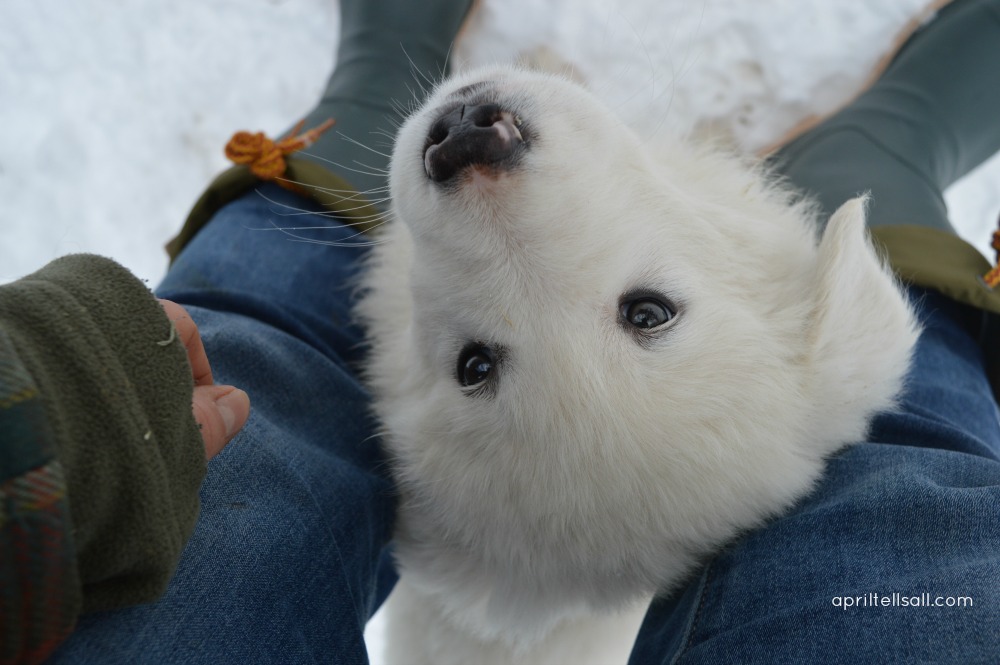



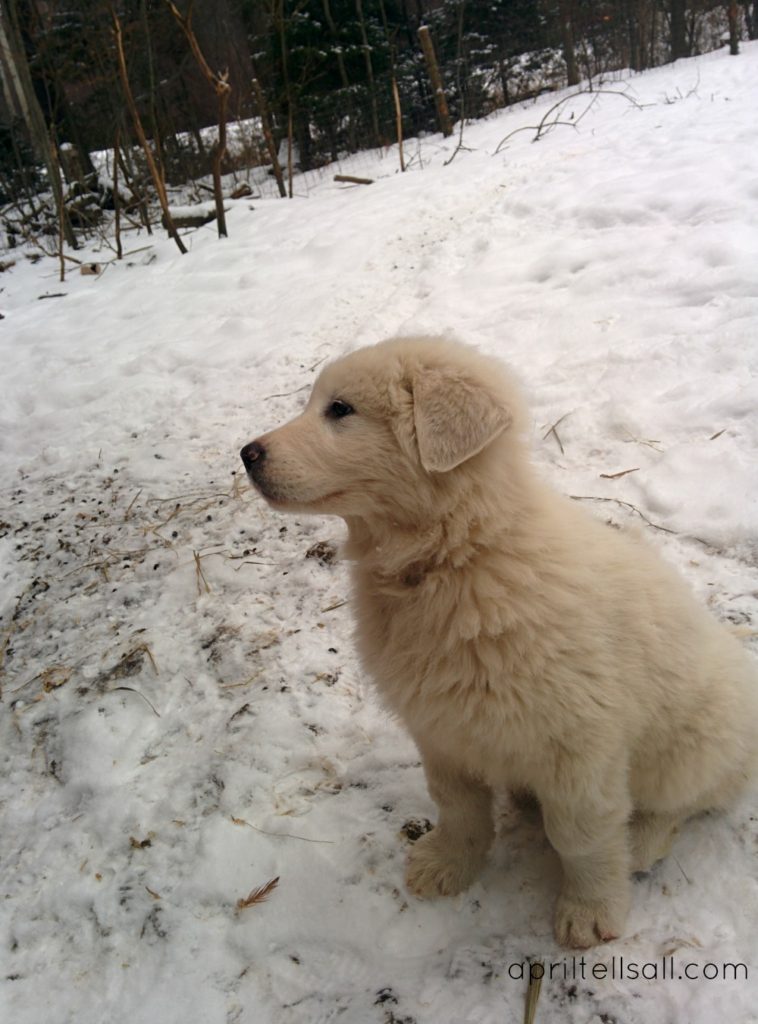

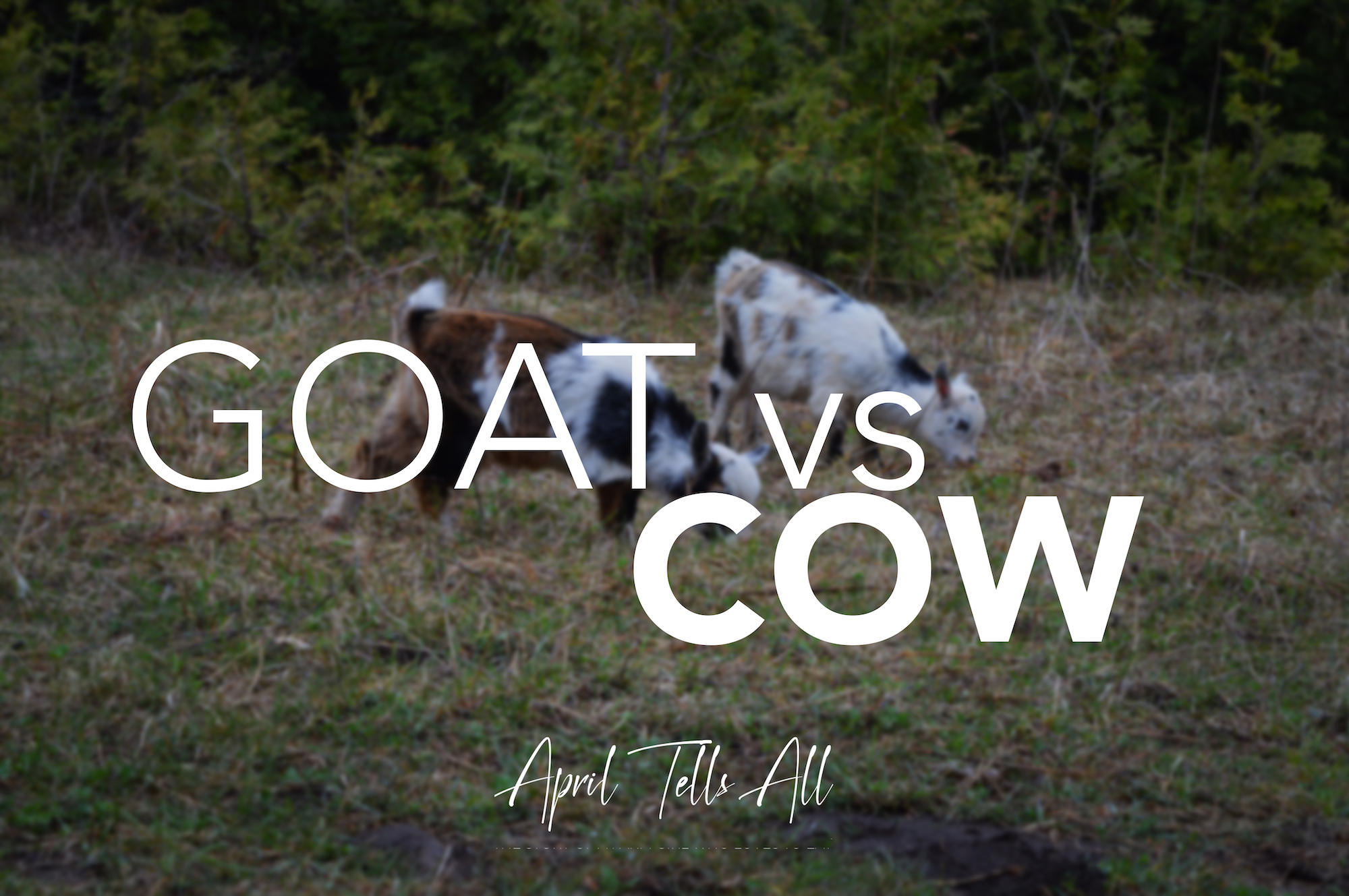
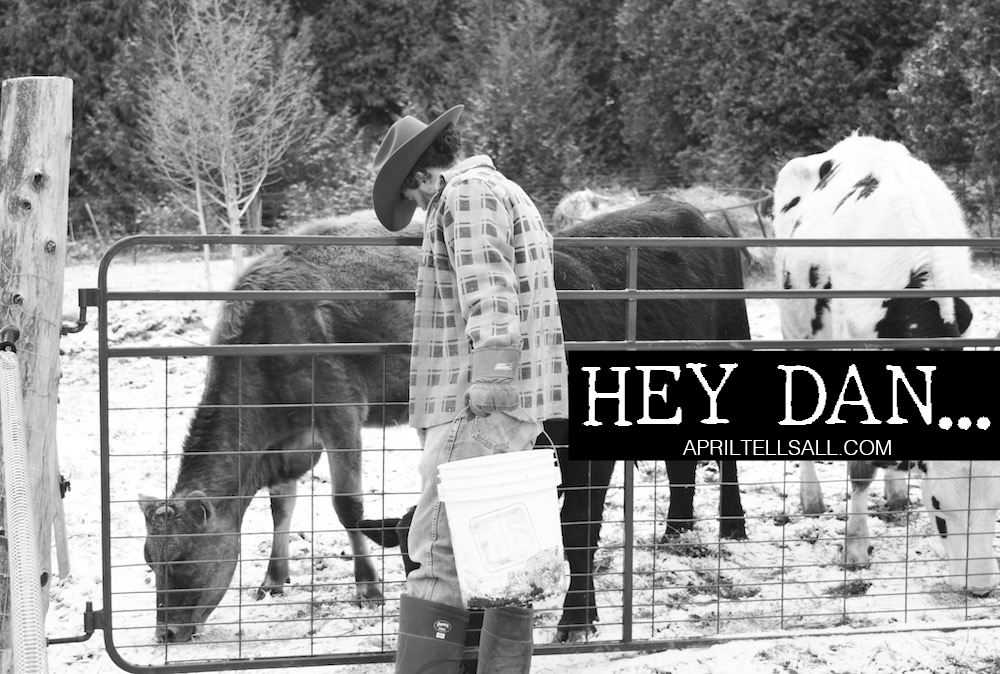
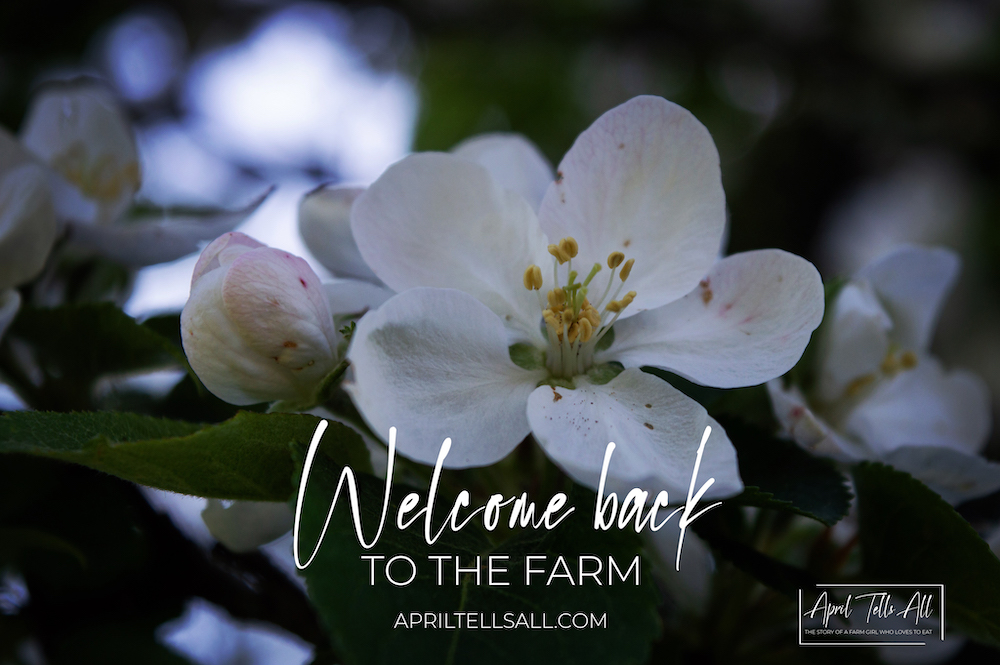
We just started this journey. How are you doing two years later? 11 week old, mix of maremma 75%, GP and anatolian. Very similar demeanor. Would love more stories and advice!
Hey Amie, I really do need to do an update piece! Thank you for the reminder. Our maremma matured quickly and was fully trustworthy with chickens at 16 months old! We couldn’t farm without her and are actually in the process of training another one. Good luck with your pup – once matured they’re pure gold.